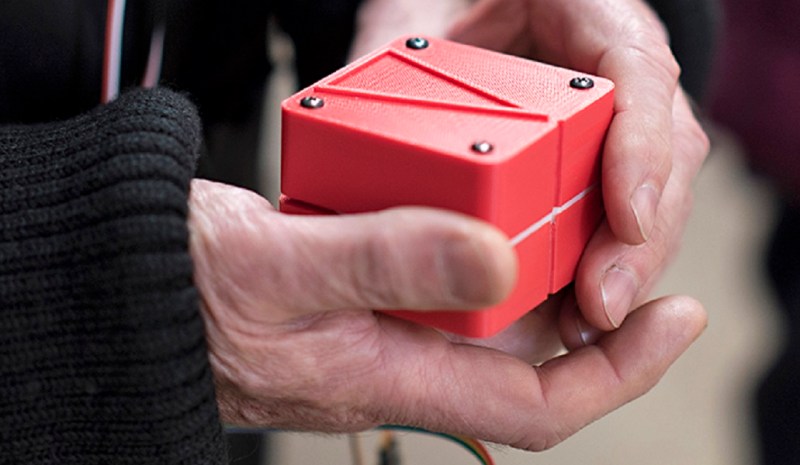
When you need go somewhere and don’t know where it is, what do you do? Most people use Google Maps or some other phone application to give them directions, but what do the visually impaired do? Currently, there is no clear answer but the creator of Animotus is out to change this. The Animotus is a haptic directional device. It is a cube split into to halves, a top half and a bottom half. The top half can rotate and extend forward. When the device is given a destination, it rotates to point in the direction of the destination (which can be felt by the raised triangle on top) and extends to show how far the user is from the destination.
The Animotus could make tremendous steps forward for the visually impaired community. Not only because it could itself provide the ability of people with a visual impairment to use Google Maps, but it also provides a groundwork for devices like robotic guide dogs. The Animotus is a huge step up from existing technology, as most existing technology relies on audio queues which are not only distracting to the visually impaired but also take away from the experience of the world around the user.
This device would not only help the visually impaired community, but would also help the adventures. The Animotus would help people that want to take in the environment not be distracted by actually wanting to reach the right destination, and would instead guide them while allowing them to take everything in.

Interesting concept. I wonder if it would be possible to achieve something similar in a more discrete form factor- say a cover on the back of a phone, or something the size of a key chain. When it comes to AT, making a device that doesn’t draw attention to the user is really important, and it seems like with some work this technology is headed in a great direction.